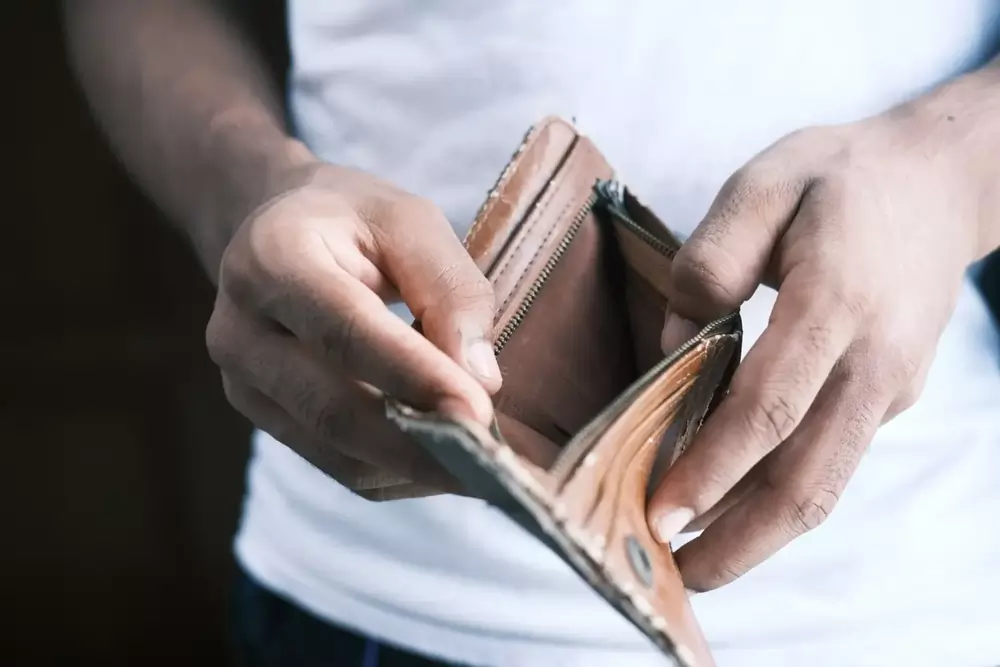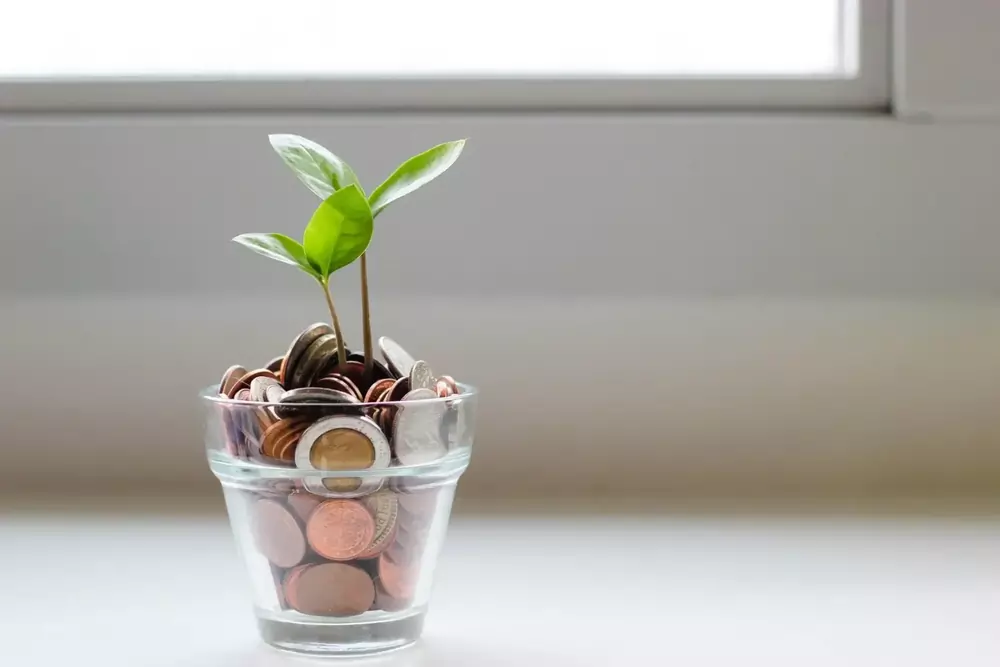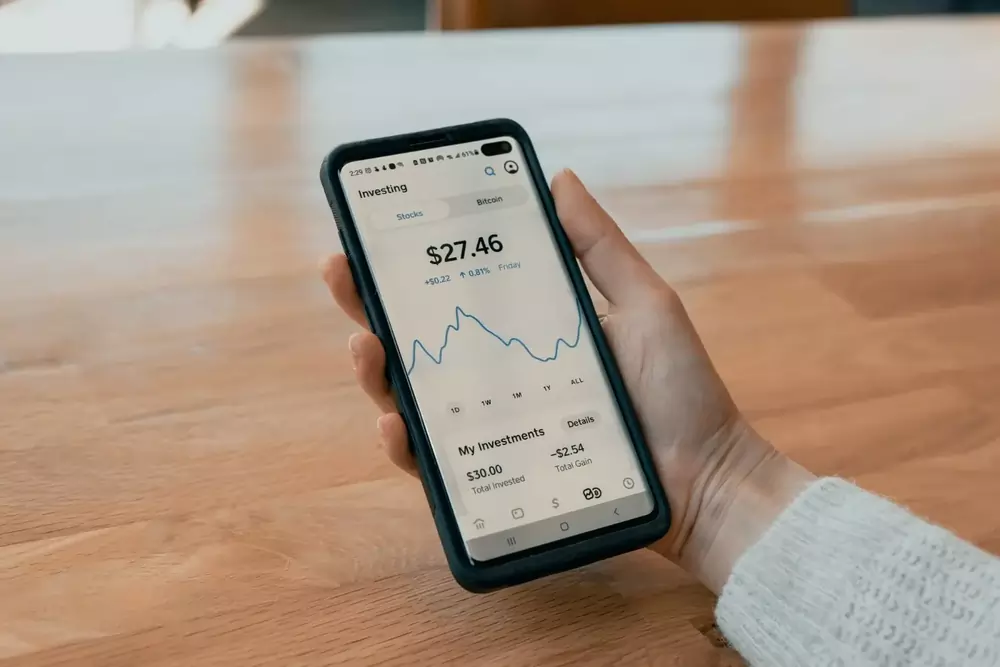How to create an emergency fund
Emergencies always seem to happen when we can least afford them. Whether it's a car accident, a medical emergency, or a natural disaster, these unexpected costs can really put a damper on your finances.
An unexpected repair. Something as simple as changing a tire to our vehicle could become very quickly into a financial burden that pushes us to anxiety and stress and could lead us to even more financial problems down the line.
Follow these tips on how to create an emergency fund, and you'll be prepared for anything that comes your way.

What is an emergency fund?
An emergency fund or rainy day fund can cover unexpected expenses or financial problems that arise during an emergency situation. Often emergency money will not be needed for anything other than emergencies. And then you can't use that money for holiday expenses. You can reserve these funds only if the need arises.

Why do I need an emergency fund?
When an unexpected emergency arises and you don't have the money to cover it, that's when your debt can spiral out of control. Emergencies always seem to happen at the worst possible time. But if you're prepared with a well-funded emergency fund, you'll be able to handle any financial hurdle that comes your way without putting yourself into debt.
Creating an emergency fund is among the most important financial decisions you can make. It offers you a means to stay out of financial trouble when an unexpected event arises. An emergency fund can help you avoid new debt and keep your old debt manageable.
You are in the middle of the expressway and suddenly, the temperature of your car starts to rise, you stop, and as soon as you open the hood of your car, you identify the typical sound that a broken radiator produces.
From there, you what is coming your way. You will need a tow truck. That is a minimum of $500 bill. You are praying that is just a matter of changing the cap of the radiator. Unfortunately for you, they need to change the whole radiator. That is another $385 bill.
After changing the radiator, the mechanic checks the car and tells you that the motor's gasket failed, and right there and at this moment you feel like you are falling from the sky without a parachute because you know that is going to cost you another $1,950.
What started as a pleasant family trip to have some ice cream with your children, ended up becoming a nightmare of more than $2,800. You don't have to be a financial expert to know that this kind of event will derail you and dry your checking accounts.

An emergency fund can save you financially
Putting together an emergency fund is like insurance to protect yourself and your family. You also need health insurance for illness, car insurance if you have a crash, and a fund to pay the bills if something unintentionally happens. Petersen says your priority in investing your emergency reserve is security. Set up your emergency savings fund right now, and establish a monthly savings goal that you are sure you can achieve.
An emergency fund makes for us the financial security that we need. It gives us a sense of peace and freedom knowing that we can cover our expenses if something unexpected comes up. And it should be among our most important financial goals.
How much should I save?
The common suggestion made by financial experts in the industry is to set a budget for emergencies in the amount of three to six months worth of expenses. But even an amount of $1,000 will put you among the 39% of Americans (almost 4 in 10 Americans) that could cover an unexpected expense of $1,000.
So, don't be afraid to start small and keep gradually increasing the amount saved to what it needs to be. A $500 savings account could save you from countless debt burdens.
A good rule is what is called the 50-30-20 budget rule. In the book "All Your Worth: The Ultimate Lifetime Money Plan", Senator Elizabeth Warren explains that we all should spend 50% on needs, 30% on wants, and 20% should be put aside for savings.
Where should I keep my emergency fund?
When we talk about emergency funds, it's important to understand the difference between an "emergency" and something else.
An emergency is something that puts your life or the life of a family member at risk. For example, an accident, an illness, an unexpected job loss. Or an unexpected repair of your vehicle or home.
An emergency is not a dinner with family or our loved ones. It is not an offer during Black Fridays. It is not that new gadget you always wanted to have.
That is why is so important to have easy access to your emergency fund in a savings account, separate from your regular saving account and checking account.
Savings account
You want your money to stay in a safe location in case of an emergency, but at the same time, such emergency savings must be easily accessible. Put your emergency funds in a high-yield savings account. Remember, it must be in a separate account from your regular accounts.
Checking account
Typically, this type of account is FDIC insured and you maintain it in a financial institution is to cover your living expenses and to make your debt payments.
Some people choose to keep their emergency savings in this kind of account because it is easier for them to transfer funds when they need them by using the convenience of online banking services. But if you are someone who struggles with the temptation of using your emergency savings for everyday expenses, this might not be the best option for you.
Cash
Generally, I'm not a fan of keeping cash with you. But, it is wise to keep a small amount of cash with you (at home, or another safe location) for those extraordinary circumstances where cash is the only accepted form of payment due to the nature of the emergency.
For example, a winter storm, a tornado, or an earthquake can force businesses to only accept cash as a form of payment if other forms of payment are not available at the moment.
How do I build an emergency fund?
There are various ways you can start saving money. The key is to pay you first.
The strategy covers various situations such as the possibility to save and the fluctuation of salaries. You probably could have used all those strategies but if you don't need to make any savings, or put a portion on tax refunds, this is an easy way to start.
Propose yourself to put your tax refund on your emergency savings account. Request that your tax refund is deposited directly into your savings account via direct deposit.
Consider creating additional resources of income like a part-time job and request automatic transfers to your savings accounts reserved for your emergencies until you have achieved your saving goal.
Remember, keep your emergency fund apart from your regular savings account or your checking account, or any other accounts. This fund is not to supplement your cash flow deficiencies, and should not be considered part of your savings accounts portfolio.
When Should I Use My Emergency Fund?
There are a number of different circumstances where you might need to use your emergency fund. Some common examples include:
- Unexpected medical bills and expenses.
How many times have you gone to a doctor's office, and a week later you are blindsided by an additional bill.
- Job loss or reduction in hours/income.
We all are very familiarized with the economic fallout and significant hardship that the COVID-19 pandemic brought upon us in the early months of the crisis; where tens of millions of people lost their jobs.
- Car repairs.
Car repairs are one of the most common emergency expenses. Everything from a water pump, breaks, tires for your vehicle.
- Home repairs.
Such unplanned expenses as a leaky roof or broken furnace are often unexpected and can be expensive.
- Natural disasters, such as floods, hurricanes, or earthquakes.
Sometimes, even if you have an insurance policy that covers those natural disasters, it takes time to file a complaint and receive the funds.
- Personal emergencies (e.g., funeral expenses).
Unexpected expenses related to a death in the family can quickly deplete your emergency fund.
- Unexpected travel costs.
That has been my case when I needed to fly out to see my father during his final days. A situation that created unplanned expenses related to the travel.
The key is to remember that an emergency fund is for unplanned, unexpected expenses. If you are able to plan for the expense or it is not an emergency.
5 Steps to Build an Emergency Fund
1. Set several smaller savings goals, rather than one large one.
Propose yourself to save your first $100. If such an amount seems impossible. Start by saving your first $20, and rinse and repeat until you have put aside your first $100, and then, add additional funds until you save at least $500. Once you have achieved such a goal, repeat it twice and you'll have put aside your first $1,000 toward your emergency fund. You will have more money to cover any unplanned expense than most Americans.

2. Start with baby steps
Any financial advisor will tell you that a good number that will help determine a budget for emergencies should be anything between three and 3-6 months worth of expenses. For many people, the aim is to pay for a student loan, credit, or mortgage. Saving six months or less in expenses may seem intimidating.
3. Make automatic contributions
As with any fund you should first pay your emergency fund. Make up a percentage of your take-home salary monthly to put it on your savings account. You can set up an emergency fund either to be automatically deposited during payday or deposited separately directly with an employer during the steps for the setup of the emergency fund. But don't just start from here on out. Find another way to build up your account quickly. If you start an emergency fund it can be a bit difficult, but it can help if you can find a little money to make it happen.

4. Don't increase monthly spending or open new credit cards.
If possible, do not use credit cards to pay for emergencies. Credit card companies will do everything to have you spend more money with them. Make smart financial choices and don't fall into this trap.
The goal is to break the cycle of using credit cards for emergencies and then pay them off with more debt. You need to be disciplined about not adding new debt and instead focus on building your emergency fund.
According to the annual study by NerdWallet that includes government data, including statistics from the U.S. Census Bureau and the Federal Reserve Bank of New York, 17% of Americans relied on credit cards for emergencies during the pandemic.
If you have to use your credit card to pay for an emergency, you're likely going to be in worse shape when the emergency is over.

5. Don't over-save.
You don't need to have an emergency fund that is bigger than what you would reasonably expect to spend in a year.
For example, if you live alone and your monthly expenses are $2000, then you should have $24,000 in savings. If you're married and have two kids, you are probably closer to $5000, so you would want to have closer to $60,000 saved.
Keep in mind that these are just general guidelines and your specific situation may require more or less money in savings.
The best way to create an emergency fund is by saving little by little over time. This will help you avoid any unnecessary stress while also building a financial cushion for those unexpected expenses.

One common way people create an emergency fund is by saving their tax refunds. Nowadays, with so many financial tools at our disposal, it should be very easy for us to use the services of online banks to save automatically. The problem is that it is also extremely easy to expend any extra cash that we might have, instead of saving regularly.
Financial emergencies always seem to happen when we can least afford them and lead us to even more problems down the line. When you're prepared for the unexpected, you can rest easy knowing that you won't have to deal with a costly bill or an unexpected emergency on top of your regular bills and monthly expenses. It is one of the most powerful financial tools to avoid debt and almost guarantee our financial well-being.
Unexpected events can happen at any time and it's important to be prepared for them by having enough money to pay for them without the need for a personal loan or increasing our credit card balance. By following these five simple steps, you can create your very own emergency fund and regain control over your personal finances, avoiding high-interest loans, regardless of your present financial situation.
By following these key principles, you'll have peace of mind knowing that you'll be able to handle your finances if anything unexpected happens.
For more details on which financial tools we recommend, visit our page "Best Financial Tools" on our website.
